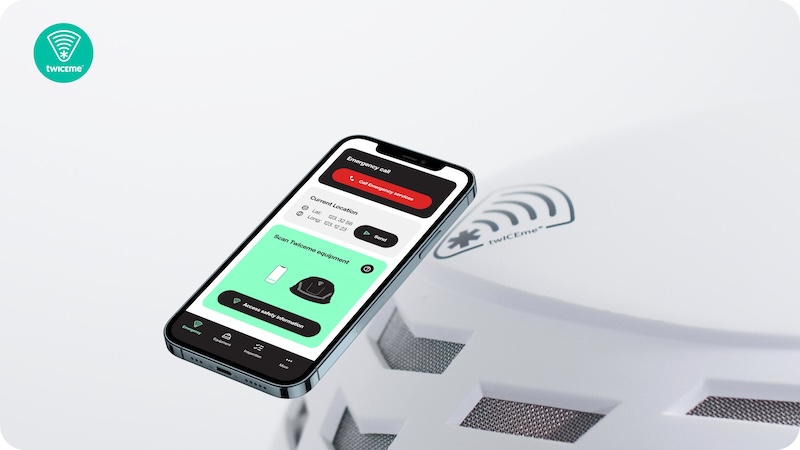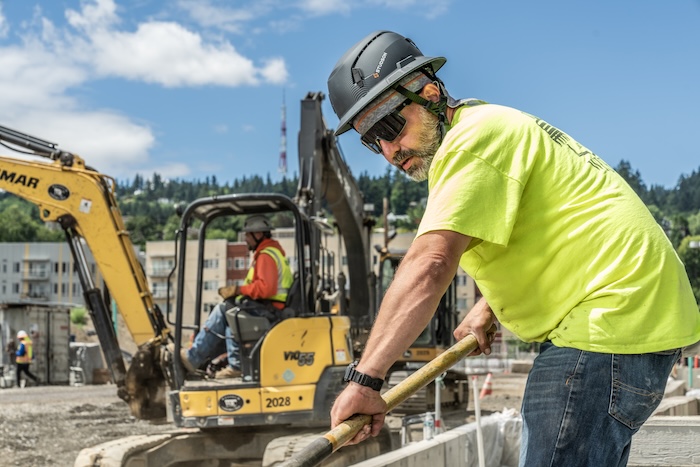Fostering a Jobsite Safety Culture Through Digital Transformation
The U.S. Energy Information Administration (EIA) predicts that by 2050, renewables will account for 27 percent of primary energy consumption, thanks to new technologies that will make renewable energy more cost-effective. According to The American Clean Power Association, nearly 16 percent of all electricity produced in the United States originated from wind, solar, and energy storage plants; in 2025, solar power generation will grow 75 percent, and wind power generation will grow 11 percent. This continued growth means more renewable energy capacity and reduced reliance on fossil fuel-generated power. The industry will rely on infrastructure construction companies and workers to support this growth, building new sites and capacity, as well as on management to inspire and rally workers with new digital-forward approaches that emphasize safety and productivity.

Clean energy sites have associated risks, including working from heights on wind turbines, managing heat exhaustion from working in high-temperature environments where solar arrays are installed, and protecting against electrical hazards and toxic gasses around biodiesel or geothermal power plants. These risks highlight the need for stringent safety measures, and for organizations to foster a culture of safety and professionalism.
The U.S. and Canada have mandated the use of personal protective equipment (PPE) to safeguard workers. To that end, the arrival of smart PPE is helping companies digitally transform and improve elements of their operations with a new approach to safety by utilizing technology to help the helpers in the event of an accident, and even empower bystanders or colleagues to act on the most human instinct of all — to help others.
PPE gets smart
Organizations are ultimately responsible for their worker safety on the job site. U.S. OSHA regulations and the Canada Labour Code require employers to provide PPE to protect employees in the workplace. Helmets, harnesses, and safety vests are essential depending on the worker’s role and the areas of their respective work sites.

Innovative smart PPE with built-in next-generation near-field communication (NFC) technology is now available to companies. This technology can store information about the equipment and the employee, including medical information, along with a history of the equipment's health. Managers, approved team members, first responders, and bystanders can interact with the PPE using a smartphone to access important information about the wearer and the equipment, saving lives and/or minimizing the impact of an injury on the job.
Initially designed for outdoor action sports helmets such as those used in biking and snow sports, the technology has been adopted for commercial and industrial purposes. The ability to store information on the PPE equips workers and safety managers with critical information, and inspires companies to reimagine their business operations through digitization.
Digitized medical information
Given the potential for injury on work sites, companies prioritizing safety must continually evaluate ways to improve their responsiveness when injuries occur. While job sites differ by location, environment, and size (all offering their own challenges), if an injury occurs, the ability to get help quickly may be a matter of life or death. Before first responders arrive during a medical event, employees or safety managers are often the first on the scene to help. If the injured person is incapacitated, having their medical information available via a quick scan by a smartphone on their PPE, without moving the person or removing equipment, can greatly improve outcomes once first responders arrive.
Knowledge of a fallen worker’s existing serious health conditions such as diabetes, heart issues, and known allergies to medicines like penicillin, as well as their emergency contacts, help first responders to be better informed and act more quickly. Workers and bystanders are empowered to take quick action, and provide more effective help when locating and identifying an injured person for first responders so they can act fast — all of which can lead to better outcomes.
Simplified inventory and inspection management
Safety is a mutual responsibility of employers and employees, and companies must train their workers to inspect gear properly. Smart PPE empowers companies to enforce safety checks digitally. Using smartphones, employers can set regular reminders through an app for employees to follow a structured process to check their PPE and submit confirmation of a completed inspection. The frequency is up to the employer and the PPE manufacturer's recommended guidelines, whether daily or weekly. Employers then use their safety management software to ensure workers comply with company safety practices. To truly foster a culture of safety, all parties must be on board. Digital transformation is empowering these improvements.
Canadian and US regulations also require construction operators to ensure PPE is in proper working order, and to replace it if damaged or expired. Companies often track PPE using pen and paper, and manually transfer data to their safety and inventory management software. Some advanced worksites affix QR codes to PPE to scan to track the equipment digitally, but on job sites where hundreds or even thousands of workers might be involved, with contractors and subcontractors, the process becomes tedious, time-consuming, and inefficient.
When smart technology is pre-installed into PPE, safety managers use mobile devices to scan, log, and track equipment more efficiently — all in a centralized, digital location. Safety teams send employees reminders when it’s time to replace their equipment. Companies then use existing safety or inventory management software to keep track of equipment and simplify the process to help employers meet regulatory requirements.

Future potential of Smart PPE
Smart technologies allow safety managers and decision-makers to rethink operational practices and consider other useful information they could digitize to make their jobs easier. In the future, teams will move beyond medical and inspection information to store other work-related documents, like employee training records and certificates. Imagine workers uploading their training records and certifications directly to their PPE, eliminating the need for physical copies. The digital storage system allows for easy, on-demand credential sharing. It will also make it easier for management to oversee and monitor the validity of documentation, while reducing the administrative burden associated with manual record-keeping.
Much of the growth the clean energy sector is experiencing relates to technological advancements. The companies tasked with meeting this demand must evolve; today, technology empowers them to transform and set new standards for compliance, efficiency, and safety. Digital tools are proven to help companies improve safety, drastically reduce the risk of accidents, and ensure rapid response when incidents occur, safeguarding both the well-being of all on-site workers and the company's reputation. Real-time monitoring and immediate access to essential information are helping transform safety protocols, creating a secure and proactive work environment. While change can be hard for organizations, embracing this digital evolution will help companies boost productivity and accountability while highlighting a company's dedication to worker welfare and operational excellence.
At the end of the day, empowering workers to make the most of their PPE through digital tools, and then providing a mechanism for workers to help each other, goes a long way toward promoting a culture of safety with real substance.
Christian Connolly is CEO of Twiceme, which promotes safety through technology that monitors equipment health, minimizes accident implications, and speeds up emergencies so everyone in the community can stay safe.
Twiceme | www.twiceme.com
Author: Christian Connolly







